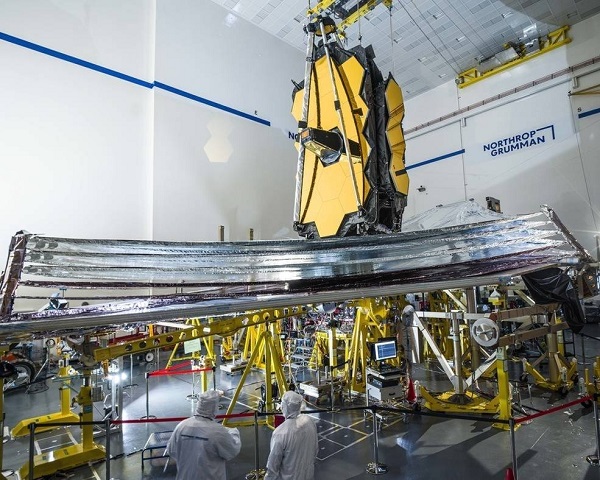New York, (Asian independent) The James Webb Space Telescope, currently on a 29-day trip to reach its orbit, has fully deployed the spacecraft’s 70-feet sunshield, a key milestone in preparing it for science operations, according to NASA.
The $10 billion James Webb Space Telescope was launched atop an Ariane 5 rocket from French Guiana on December 25, kicking off a long-delayed, potentially transformative mission to study the early universe, nearby exoplanets and more.
The sunshield – about the size of a tennis court at full size – was folded to fit inside the payload area of Ariane 5 rocket’s nose cone prior to launch. The Webb team began remotely deploying the sunshield on December 28, 2021, three days after launch.
“Unfolding Webb’s sunshield in space is an incredible milestone, crucial to the success of the mission,” said Gregory L. Robinson, Webb’s programme director at NASA Headquarters, in a statement.
“Thousands of parts had to work with precision for this marvel of engineering to fully unfurl. The team has accomplished an audacious feat with the complexity of this deployment – one of the boldest undertakings yet for Webb,” he added.
The mission team explained that a five-layered sunshield will protect the telescope from the light and heat of the Sun, Earth, and Moon. Each plastic sheet is about as thin as a human hair and coated with reflective metal, providing protection on the order of more than SPF 1 million. Together, the five layers reduce exposure from the Sun from over 200 kilowatts of solar energy to a fraction of a watt.
This protection is crucial to keep Webb’s scientific instruments at temperatures of 40 kelvins, or under minus 380 degrees Fahrenheit – cold enough to see the faint infrared light that Webb seeks to observe.
The unfolding occurred over the course of eight days, the team said.
The unfolding and tensioning of the sunshield involved 139 of Webb’s 178 release mechanisms, 70 hinge assemblies, eight deployment motors, roughly 400 pulleys, and 90 individual cables totalling roughly one quarter of a mile in length.
The team also paused deployment operations for a day to work on optimising Webb’s power systems and tensioning motors, to ensure Webb was in prime condition before beginning the major work of sunshield tensioning.
The world’s largest and most complex space science observatory has another five and a half months of setup still to come, including deployment of the secondary mirror and primary mirror wings, alignment of the telescope optics, and calibration of the science instruments. After that, Webb will deliver its first images, NASA said.
The James Webb Space Telescope is an international partnership with the ESA (European Space Agency) and the Canadian Space Agency.








